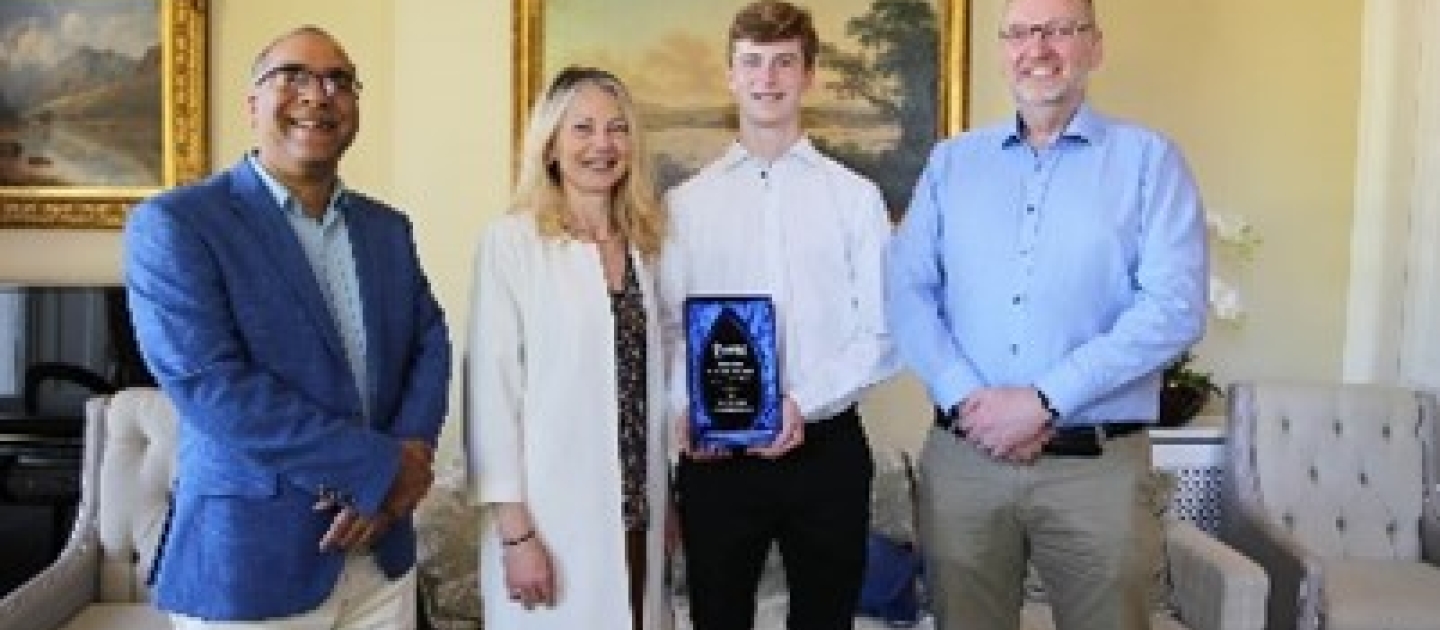Winner of the Inaugural Dr. Vincent Casey Award for Best Final Year Project in Physics
This award reflects the great achievements of Dr. Vincent Casey at the University of Limerick, and so it was with great honour and gratitude that I received it. My project, entitled "Controlling Self-Organised Criticality", was something I became very passionate about the more I worked on it. Over the past year, I have plunged headfirst into the chaos to find new patterns and strategies that could lead to greater control over complex systems.
The world is a complex place, brimming with seemingly random events. Unsurprisingly, chaos theory is one of the most animated fields in mathematics right now, and multidisciplinary scientists are only just beginning to uncover the potential mechanisms behind everyday nature. To be clear, I’m not talking about the standard model or a new theory of gravity. I’m talking about the yet-unknown processes that unify chaotic systems of all kinds. Everything from electronic flicker noise, to earthquakes; from market crashes, to fractal properties. In chaos theory, these events are modelled as deterministic systems and analysed with cutting-edge quantitative and qualitative techniques. The theory of self-organised criticality was put forward by Per Bak in 1987 as an explanation of various natural phenomena and thus many complex systems. Using the cellular automaton simulation method, Bak et al. demonstrated how a simple system of interconnected parts displays the same remarkable attributes as nature itself.
"Controlling Self-Organised Criticality" introduces an advanced cellular automaton programme for the investigative research of complex systems and implements that tool on self-organised critical systems to determine the potential for control. Ironically, my project showed that these proclaimed "self-organised" systems are indeed susceptible to external influence. The major outputs of the project were two-fold:
-
A novel suite of programmes was developed in Python. These provide various functionalities that allow the user to easily implement their own cellular automaton simulation, then analyse and visualise it with parameters relevant to the study of complex systems.
-
Two models, known as the BTW model and the OFC model, are given complete implementations within the new programme and are subjected to a series of candidate control methods. These consist of a feedback loop with various logical conditions to actuate an external perturbation of the system. The aim of the control methods is to simply have a non-trivial effect on the system, since even evidencing the ability to influence the behaviour of these systems opens many new avenues of research. In reality, the results showed very promising responses to certain control methods.
I hope that my project can contribute ongoing value to the research of complex systems. My report and source code are accessible to anyone who asks. I personally cherish cooperation and shared resources, so the new programme is freely available to researchers interested in studying complex systems using cellular automata. I also believe these findings in control viability warrant further study, and I look forward to seeing what comes of it.
Ethan Shanahan, 4th year B.Sc. in Mathematics and Physics
